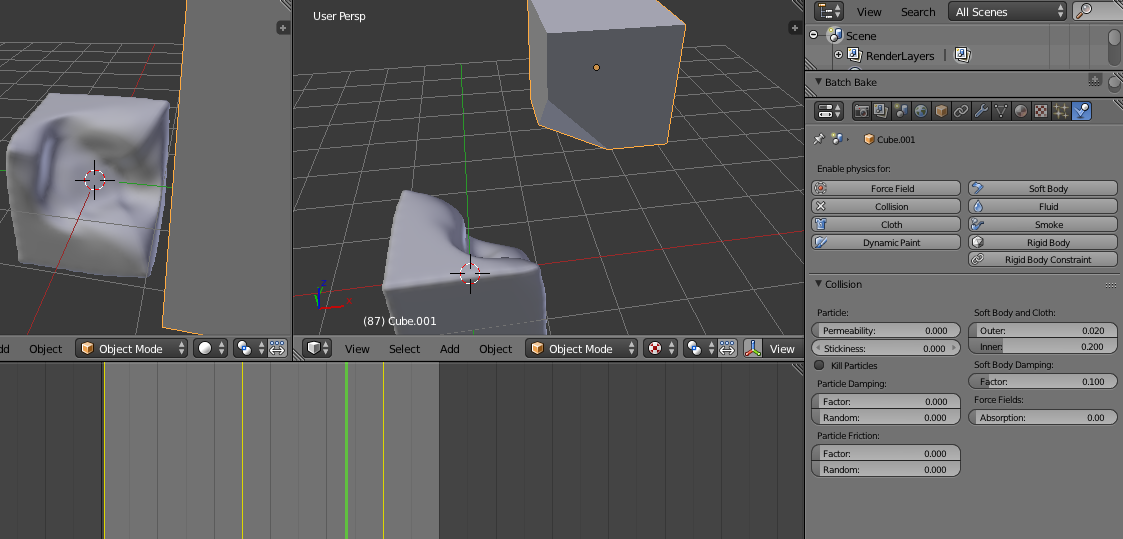So the general setup here is to use an animated particle emitter set as dynamic paint brush, which will cause deformations on another object set as dynamic paint canvas. The latter object has its surface type set to Displace under the heading Dynamic Paint Advanced. Using this basic setup, when the particles make contact with the surface, the deformation in the canvas is a sphere shape which reflects a point with a radius.
Now when another object is instanced to replace the particles using the setting Object which is found in the particle settings' Render area, the particles now show up as the object that is attached here. However, the surface deformation that takes place on the brush canvas is still sphere-shaped.
So this brings me to the question, can we make the deformations that take place on the canvas reflect the shape of the object that is replacing the particles?



